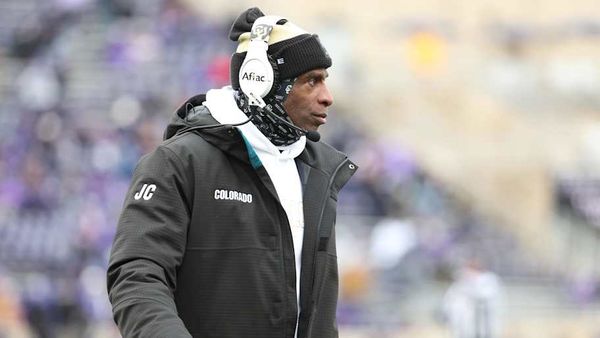
“I’ve often said: Trump could cure cancer and people would still criticise him,” observed Brian Glenn, a rightwing reporter standing in the Oval Office.
“It’s true,” replied a gratified Donald Trump, sitting behind the Resolute desk.
A few minutes later, as the US president discussed crime in Washington DC, he returned the compliment. “Brian, you got mugged here a long time ago, and the mugger must have felt some pain because you’re a tough cookie,” he said.
The pair shared some banter and then, just as Trump was poised to call on a reporter from the Guardian, Glenn interjected and suggested they listen to cancer survivors present at Tuesday’s executive order signing. In a stroke the informal press conference – hours after a pair of incendiary speeches to military generals and before a government shutdown – was effectively over.
It was not the first time that Glenn, who works for the Real America’s Voice platform and is the boyfriend of Marjorie Taylor Greene, a Republican congresswoman, has played the role of Trump sidekick, a useful foil guaranteed to lighten the atmosphere. It was also a small but telling example of how the White House press corps has changed between Trump’s first and second terms.
Seasoned reporters from mainstream media outlets are still asking tough questions. But in the Oval Office, on Air Force One or in the press briefing room, there is no way to avoid the new contingent of Maga (Make America great again) reporters, influencers and podcasters lobbing toothless queries or fawning comments at their favourite president.
“They’re hand-picked to protect him and once again it’s another emulation of authoritarian leaders around the world who suppress the free press in order to avoid accountability,” said Tara Setmayer, a former Republican communications director on Capitol Hill. “[Trump] surrounds himself with sycophants who ask softball questions that allow him to drone on about nonsense and propaganda and disinformation.”
The White House press corps has been trying to hold presidents accountable without fear or favour since the late 19th century, sometimes with more success than others. It was accused of being too deferential to the George W Bush administration during the Iraq war. But it has also proved dogged, for example, in grilling Barack Obama’s White House over the disastrous rollout of healthcare.gov and a terrorist attack on a US diplomatic compound in Benghazi, Libya.
Trump’s first term featured combative exchanges with journalists such as Jim Acosta of CNN, who was temporarily banned from the White House only for his access to be restored following a lawsuit. Some rightwing outlets did appear in the briefing room, but the presidential pool of reporters remained under control of the White House Correspondents’ Association (WHCA).
The second Trump administration, however, has used a variety of tactics to change the tone, tenor and pace of media interactions. The president prefers to use the Oval Office rather than bigger venues like the East Room, “in part because the acoustics are better and he is not forced to stand for long periods”, the New York Times reported.
In this setting, he takes questions from a pool of reporters no longer selected by the WHCA, but decided by the White House itself. This has led to the exclusion of news wire agencies but the inclusion of fringe rightwing voices, many of whom are openly supportive of the president.
Matt Gertz, a senior fellow at the watchdog Media Matters for America, said: “I don’t want to be too glowing about the performance of the White House press corps and the way that they interacted with administrations in years past. But I think there was an understanding of sorts that reporters were on one side and the government was on the other and the purpose of the reporters was to try to get information from the government and bring it back to their audience through tough questioning.
“What you have now is effectively an infiltration of the press corps by people who are more interested in helping the administration than they are in trying to get information out of it.”
Media Matters has been tracking examples of reporter sycophancy. In February, when the Ukrainian president Volodymyr Zelenskyy visited Trump in the Oval Office, Glenn demanded: “Why don’t you wear a suit? You’re at the highest level in this country’s office, and you refuse to wear a suit. Do you own a suit?” (When Zelenskyy returned to the Oval Office last month in more formal attire, Glenn quipped, “You look fabulous in that suit,” and the pair made peace.)
At the same infamous meeting, Daniel Baldwin, chief White House correspondent for the One America News Network, asked Trump about peace negotiations with Russia: “What gave you the moral courage and conviction to step forward and lead that?”
Trump replied: “I love this guy … One America News does a great job. I like the question.”
In April, Jordan Conradson, a reporter at The Gateway Pundit, said to Trump: “I want to get your response on the leftist media. They’re trying to hide the mugshots that are featured on the front lawn of rapists, murderers, paedophiles. What do you think of that? Aren’t they proving to be the enemy of the people?” For good measure, he said of Trump’s “Gulf of America” cap: “I like your hat, by the way.”
There are similarly ostentatious displays in the briefing room. In January Glenn told Karoline Leavitt, the press secretary: “You look great. You’re doing a great job.”
In April, Cara Castronuova, a former boxer who works for a media network run by the MyPillow chief executive and election conspiracy theorist Mike Lindell, paid tribute to the president’s physical fitness.
She asked Leavitt: “Will you guys also consider releasing the president’s fitness plan? He actually looks healthier than ever before, healthier than he did eight years ago, and I’m sure everyone in this room could agree. Is he working out with Bobby Kennedy and is he eating less McDonald’s?”
The second Trump administration has added a seat in the briefing room for “new media”, referring to professional journalists, podcasters and influencers. The person in this seat is always called on first by Leavitt and is often a Maga cheerleader.
Among the recent examples was social media personality Benny Johnson, who described his personal experience of crime in Washington and railed against “any reporter that says, and lies, that DC is a safe place to live and work”. He told Leavitt: “Thank you for making the city safe.”
Johnson also asked if a so-called “department of government efficiency” (Doge) staffer known as “Big Balls”, who was recently assaulted in the District, would be awarded the Presidential Medal of Freedom.
A Media Matters review of the 16 press briefings held from 20 January to 22 April found that Leavitt called on rightwing outlets 41% of the time (110 out of 267) – still less than half but a significant increase from past administrations. Four of the five reporters called on most were from rightwing outlets: the Daily Caller’s Reagan Reese, Fox News’s Peter Doocy, the Daily Wire’s Mary Margaret Olohan and the New York Post’s Diana Glebova.
The research also showed that the White House promoted smaller, far-right media over many established outlets, calling on the One America News Network (five times) and the Gateway Pundit (five) more than the Washington Post (four) and Associated Press (three) over that period.
Gertz added: “There’s no question that Donald Trump and other people who speak from the podium do not have a problem saying things that are not true in response to tough questions from reporters. But now they have an outlet. They can always turn to people they know are going to ask these sycophantic questions when they need a breather or want to change the subject.”
This new calculus has enabled Trump and his spokespeople to change the rhythm of media interactions, blunting the momentum of difficult questions by turning to a known administration ally.
Bill Galston, a former domestic policy adviser to the former president Bill Clinton, said: “It gives the press secretary a chance to change the entire dynamic of daily briefings because she is always free to interrupt the flow of negativity by calling on known cheerleaders in the room.”
Galston suspects that the shift in the centre of gravity has some effect on the entire press corps. “They may feel a little bit more intimidated about asking questions in the toughest way if they think that, if they go too far, they’re going to get a tongue lashing from the press secretary rather than an answer and she’s going to seize the opportunity to do a Trump-like joust. I have to believe, at least at the margin, that has some effect.”
Yet the stalwarts of the US media continue to do the work. TV correspondents such as Yamiche Alcindor and Peter Alexander of NBC News have riled the president – and prompted insults – with their sharp, persistent questions. Maggie Haberman of the New York Times skewered Leavitt over Trump’s birthday letter to sex offender Jeffrey Epstein.
Jon Decker, senior national editor for Gray Television and member of the White House press corps for 30 years, said: “Regardless of whether it’s a Republican administration or a Democratic administration, I’m still going to ask tough but fair questions. I’ve personally worked with 17 White House press secretaries and every one of them calls on me because they recognise that I’m always going to be fair. That is something that any reporter should keep in mind if they want longevity on this beat.”







